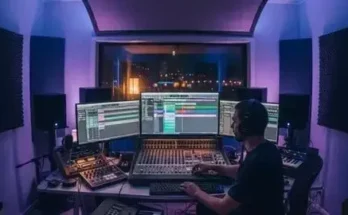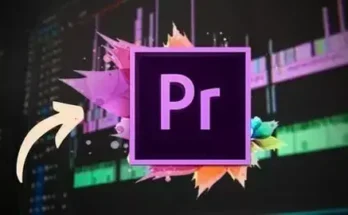MP4 GPX PDF | 1.5 GB
Superimposition and Advanced Chord Harmony for Jazz Guitar
Whether you compose or arrange for solo jazz guitar, or play in ensemble settings, Peter Mazza’s Harmonic Supernova for Jazz Guitar will significantly enrich your harmonic palette with a comprehensive range of grips, superimposed chords, superimposed arpeggios, and a versatile vocabulary of chords voiced with specific tones voiced on top.
Peter Mazza is widely recognized for his creative and virtuoso interpretations of jazz standards as well as his own thoughtful compositions. “Blending clean and fluent lines with colorful chord voicings and driving pulse, he creates imaginative ensemble arrangements as well as lush solo guitar pieces.” We’re thrilled to welcome Peter to the family with his first TrueFire course, Harmonic Supernova for Jazz Guitar!
Peter kicks the course off with a quick jazz rhythm primer focusing on the Charleston Feel, Swing Feel, Triplet Feel, and Mixing Jazz Rhythms.
”While lush harmony often stands on its own in rubato playing, it takes on a whole new dimension when played with a deep swing feel and command of the rhythmic language of jazz. In this segment, I discuss the feeling of swing eighths, beat emphasis on 2 & 4 in 4/4, and the overview of three essential rhythms/rhythmic feels that will clarify yet deepen your sense of swing, time and rhythm while giving even more vitality to your harmonic choices.”
In the second and third sections, you’ll focus on several chord grip variations for both major and minor 2-5-1’s using approaches like raising or lowering a voice, using passing notes, adding simple melodic connections, and ascending voices.
”One of my teaching “mantras” is “advanced playing is mastery of basic things, not a basic understanding of advanced things”. When it comes to voicings, this starts with knowing what Tuck Andress calls the “grip chords” for II V I VI progressions. I have two main ways I group these II V I VI progressions which I demo here. Then I move them through all 12 keys down in steps. We’ll use these grips to delve into some advanced and interesting chords and techniques. We’ll also work with essential grip chords for IImi7b5 V7alt Imi VI7alt progressions in two main positions. I share some colorful voicings and sight some basic but creative chord-scale relationships that are a vital step towards thinking and playing advanced harmony.”
In the fourth and fifth sections, Peter introduces superimposed chords and arpeggios for minor and major 2-5-1s using drop two inversions, superimposed arpeggios, and consecutive voiced 7ths.
”I really drive home the concept that in advanced jazz harmony, that each chord in a II V I VI is its own key. I take a II V I VI progression in C Major and I sight the 4 keys used. Then I proceed to spell each chord up from its R 3 5 7 9 11 to 13. Any 4 consecutive notes inside a 13th chord, spell a seventh chord of some kind. I call the seventh chord arpeggios inside a 13th chord, arpeggio superimpositions. This concept has simultaneously been the most comprehensive in mastering harmony, and yet a fast track to accessing that mastery. It turns out that it’s a great ear training and fingerboard study, plus it applies to both lines and chords! I’ll also perform the “golden sequence” of superimposed chords played in several ways. First in consecutive/root position, then as 1st then 2nd inversion drop 2 voicings. I blend arpeggios and chords to get a pianistic effect, and further spice it up with some cool rhythms!”
In the sixth section, you’ll focus on expanding your vocabulary of chord voicings with specific tones voiced on top of the chord. We’ll voice thirds, fifths, sevenths, ninths, elevenths, and thirteenths on top as options. We’ll apply those options using a progression with both minor and major 2-5-1s.
”The backbone of many jazz standards is the diatonic cycle, or what we know as the first 8 bars of “Autumn Leaves”. I break down this progression in detail. As part of that, I teach you secondary dominant 7th chords. I then spell out the notes in each chord in the progression played as 13th chord arpeggios so you have full access to all the notes on each chord. As part of this, I clarify some scale choices for dom7s. I also sight the use #11 on Major and Dom7s, and natural 9s on minor chords (including min7b5). I explain the importance of 13th chord knowledge to melodic soloing, given that chords change in jazz tunes, quickly. Add in how important it is to play with a swing feel and use space, I explain that it is infinitely more useful to think about intervals rather than scales on each chord, when setting out to play lyrical, motivic and swinging solos.
In our final section, we’ll put all of the key approaches to work by applying our Harmonic SuperNova knowledge over a set of 4 performance studies.”
In the 7th and final section, you’ll put all of the key approaches to work by applying your Harmonic Supernova knowledge over a set of 4 performance studies: Major Two-Five All Keys, Minor Two-Five All Keys, Bb Blues, and F Blues.
Peter will explain and demonstrate all of the key concepts and approaches along the way. You’ll get standard notation and tabs for all of the key examples and performances. Plus, you’ll be able to use TrueFire’s learning tool to sync the tab and notation to the video and can also loop or slow down the videos so that you can work with the lessons at your own pace. All the backing tracks are included to work with own your own as well.
Grab your guitar and let’s get our Harmonic Supernova on with Peter Mazza!
[toggle title=”Home page”]https://tinyurl.com/y7acf2ao[/toggle]
http://alfalink.to/4d01d457e14b05aee2f2
Please REPORT in Comment Broken Links





